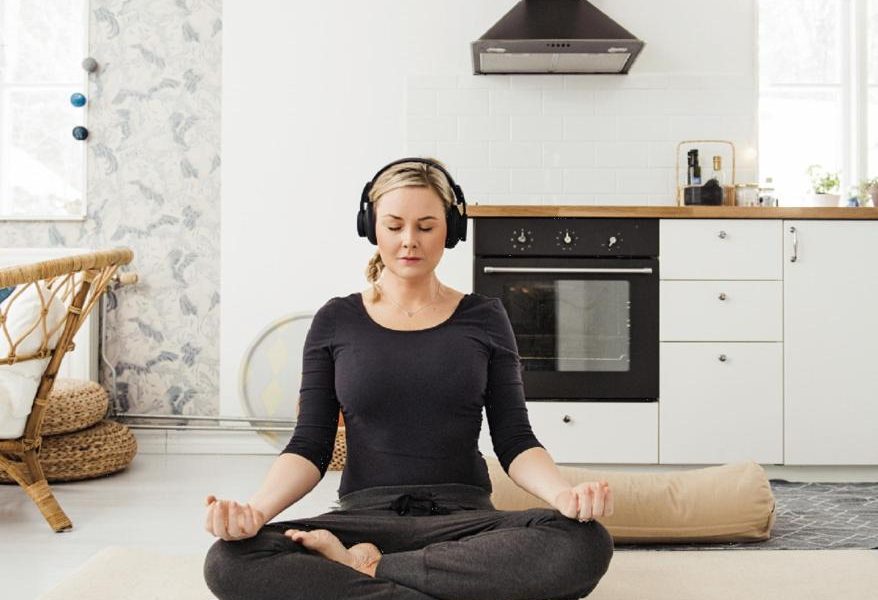Over the last few years, thanks to YouTube, Instagram and a certain curly-haired personal trainer called Joe Wicks, the world has embraced high intensity interval training (HIIT). The short bursts of exercise, that have been proven to help everything from weight loss and endurance to cognitive performance, have encouraged the country to get bouncing about their living rooms. But, as any fairweather HIIT fan will tell you, exercising too hard, too soon or too often, can be a quick route to injury, not to mention achy knees – and it can play havoc with a weak pelvic floor. This is why just about every 2019 fitness trend list has given a nod to exercises that are the antithesis of the ‘go hard or go home’ mentality. From low intensity interval training (LIIT) and deep stretch classes, to gong baths and yin yoga, we’re moving towards a more holistic approach to activity – helpfully bundled up under the umbrella of conscious movement. You might have heard the term in your yoga or Pilates class – towards the end of last year, The Guardian profiled the trend, describing it as an approach that looks at “the big picture, diagnosing your physical, spiritual and emotional needs”.
Get to grips with conscious movement
The goal of conscious movement is to strike a balance between your fitness, nutrition, sleep and stress levels. You don’t want one at the cost of the others. You can still bash out a HIIT workout – just make sure you stretch properly afterwards, get a night of good sleep and look at ways to manage your anxiety levels. It mixes kindfulness, mindfulness, fitness and healthy eating and eschews abstinence and gruelling workouts. “Working out should be the cherry on the top, rather than the only thing you do that day,” says personal trainer David Higgins, whose fitness philosophy is built around treating the mind and body together. “Your goal can’t just be a short term one of losing weight – it should be ‘I want to live longer, I want to live pain free, I want to take control of my body and give myself some love’.” Higgins knows what he’s talking about – he spends much of his working life on film sets, honing the bodies of stars such as Gal Gadot, Margot Robbie and Samuel L Jackson. He’s also the founder of London’s Ten Pilates, oversees fitness at The Corinthia Hotel in London and has just published his first book The Hollywood Plan (Headline, £25). His book introduces his sensible and logical Dynamix method, a combination of low intensity workouts, healthy eating, intermittent fasting and self care. It feels like a breath of fresh air in a market dominated by clean eating, fad diets and joint-busting workouts. “We’ve become so disconnected and distracted,” he says. “We need that conscious reconnection and to disrupt the chronic stillness.”
How do you start?
The first step is sorting out your posture (see page 64 for a posture-boosting workout). “If you sit down at a computer for 10, 15, 20 years, your body gets really good at becoming C-shaped,” says Higgins. “Tuck your chin in when you’re at your desk, take your phone calls walking around and set an hourly alarm to get up and move about.” He also suggests rolling a tennis ball under your feet. “You’ll notice the physiological effect it gives on the length of your hamstrings and the tension around your lower back.”
To get in tune with how you’re feeling, Higgins recommends keeping a diary of what you eat and how you feel at different points in the day. “If you’re tired at 3pm, you can look back to what you ate at lunch and try something different tomorrow,” he says. “The goal is to understand how your body responds and reacts.”
Beat stress
The path to conscious movement might feel forensic at first but just a few weeks of diary keeping can usher in a whole new set of mindful habits. It’s something yogis, athletes and fitness coaches have long been practising, so it’s no surprise a more mindful approach is now being embraced by everyday folk. “I see a lot of people who are struggling with stress and anxiety that is in part caused by the speed and demands of modern, and particularly urban, life,” says psychotherapist Claire de Boursac, who also runs forest bathing sessions alongside her London clinic. The Japanese mindfulness technique involves walking through a forest and carrying out small tasks (think: collecting something from the floor or examining a tree) that slow you down and focus your mind. “Most of us live in a hyper-stimulated state – our lives have evolved much faster than our biology,” she says. “Forest bathing is a de-stressing practice that puts us back in the natural world.”
More than exercise
Conscious movement extends to all facets of life, from workouts and stretching (dynamic, slow and precise), to your diet (a rainbow of food; low on junk and booze) and your sleep (no blue light an hour before bed; aim for six to eight restorative hours). The demand for it can be seen in the new breed of mindful workout classes (that address massage and mobilisation) and recovery classes for your days off. It can also be seen in arboreal locomotion, which is akin to a martial art performed in trees. Those running lower-impact yet performance-enhancing classes are finding themselves as busy as Spin instructors. FLY LDN, which opened in the capital last year, is dedicated entirely to yoga and low intensity interval training (LIIT). “The approach that, unless you throw up after a workout, you’re not working out, is unsustainable,” says founder Charlotte Cox. “People are facing a lot of stress in life, being pulled in all directions, and experience pressure from social media, and we don’t need those extremes. If you do a little bit every day you will feel better – you won’t get crash diet results but by taking it down a notch and focusing on form, you can achieve real, long-term results.” It’s a sentiment echoed by David Higgins: “The only way to motivate yourself is to be kind to yourself and stop giving yourself such a hard time,” he says. “If you start to feel dread, then what’s the point? You have to recognise that you don’t have to follow that ‘burn it to earn’ mentality in order to succeed.”




















